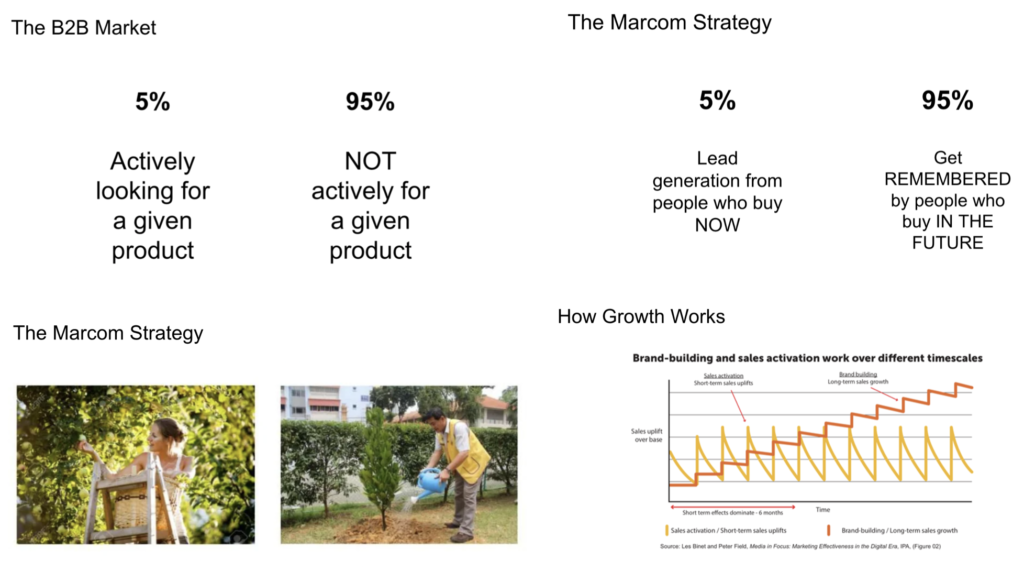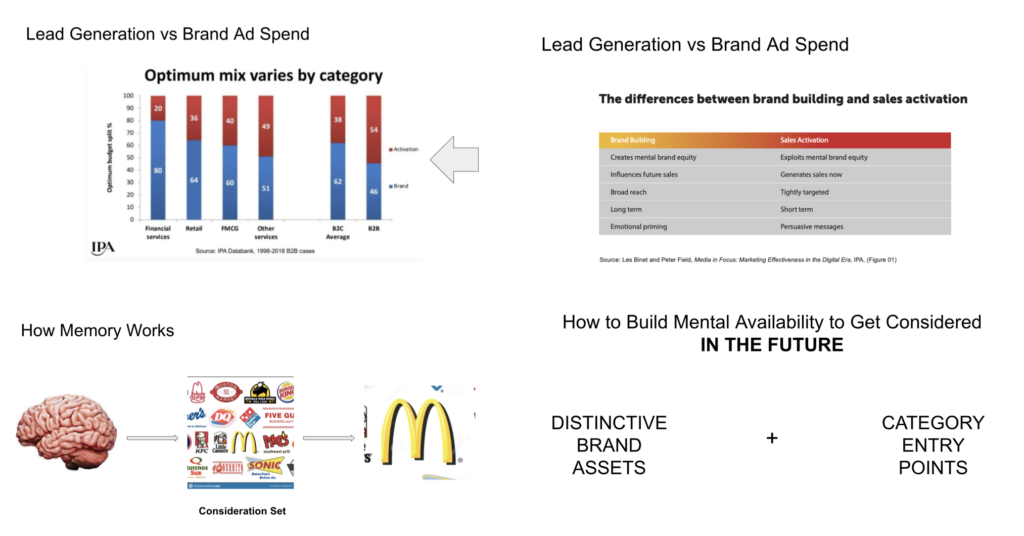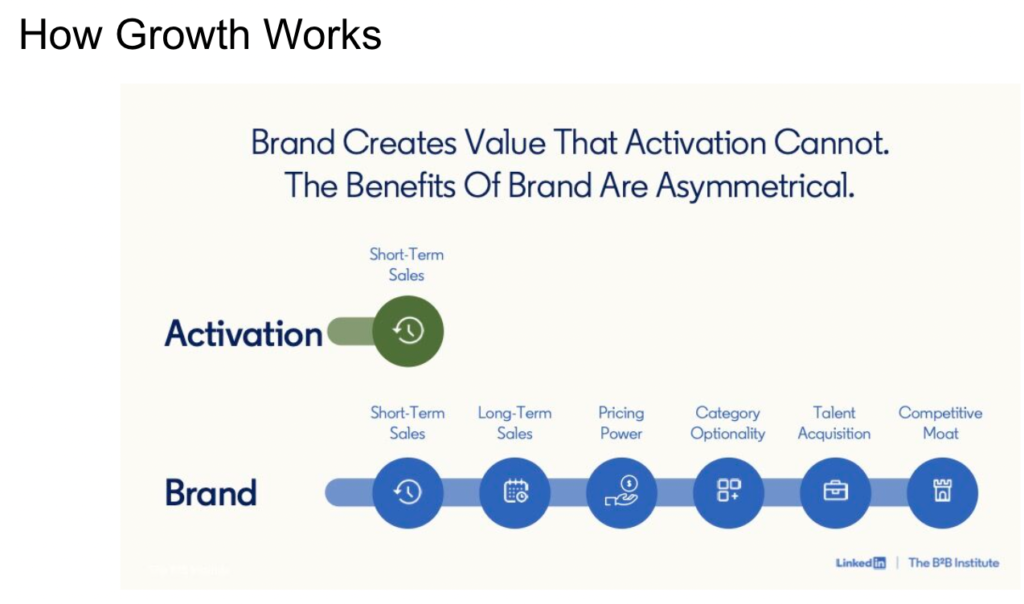The B2B Secret: How Building a Brand is the Ultimate “Growth Hack”
On average, 95% of B2B buyers are not currently “in market,” meaning that they are not actively looking for or considering whether to buy a given type of product. As a result, most marcom activity needs to focus on getting remembered by those 95% so that they will think of you when they need your type of solution in the future. That means getting your product “top of mind” and placed on the day one “consideration list” thats are created by buying committees. Most will end up buying one of the products on those shortlists. In this talk, Samuel will discuss the benefits of a strong brand, product marketing versus brand marketing, the importance of mental availability and brand equity, examples of good B2C and B2B branding, how to build a brand, and how to manage and measure mental availability brand equity. After all, B2B marketing is more similar to B2C than people think.
Actionable takeaways:
— Understand the importance of brand equity and how strong brands lead to greater revenue and profit, more sales pipeline in the present and the future, greater conversion rates, higher prices, and overall valuations.
— See how to build mental availability and brand salience among the 95% of B2B buyers who are not in the market right now so that they will remember you when they want to buy a product in the future.
— Learn the step-by-step process of brand positioning, brand codes, brand objectives, brand architecture, tactical execution, budgeting, and tracking.
What This Speech Covers
For more detail, please read these B2B columns of mine in The Drum:
First: Should B2B content marketers focus more on advertising? Second: An exclusive look at new B2B marketing research Third: Brandless and branding.
Presentation Excerpts
On average, only 95% of the market is actively looking for a given solution. That means that 5% of the market should be targeted with direct response, lead generation, and sales efforts. The other 95% should be targeted with marcom that aims to get the company remembered for when those 95% do want to buy in the future. Of course, quick leads and sales are important for survival and growth in the short term. But the most growth in the future comes from building a brand among all potential category buyers.
To achieve both short-term and long-term B2B marketing goals, marcom spending must be divided into two categories: activation and brand. On the brand side, marcom must focus on people, be a little more emotional, and build mental availability — it tells people what to think and remember over the long term. Conversely, activation spend tells people what to do (click and become leads) right now.
When a person wants to buy something, his brain comes up with a list of options that are “top of mind.” This is a consideration set. The goal of brand advertising is not just to build awareness that you exist — it is to build enough mental availability so that you are in everyone’s consideration set in the future. If you are not in the consideration set in the beginning, you will never be bought at all. The goal of B2B brand advertising is to create memorable ads that use both distinctive brand assets and speak to the times when people start thinking about buying the category (these are called category entry points).
Over millions of years, our human brains have evolved to recognize and remember people, characters, and particularly faces. Building and using such distinctive brand assets is the best way for your company to get remembered.
Activation certainly gets leads in the short-term. But building a strong brand throughout the entire category gets leads today and leads tomorrow along with increasing pricing power, talent acquisition, and more.



